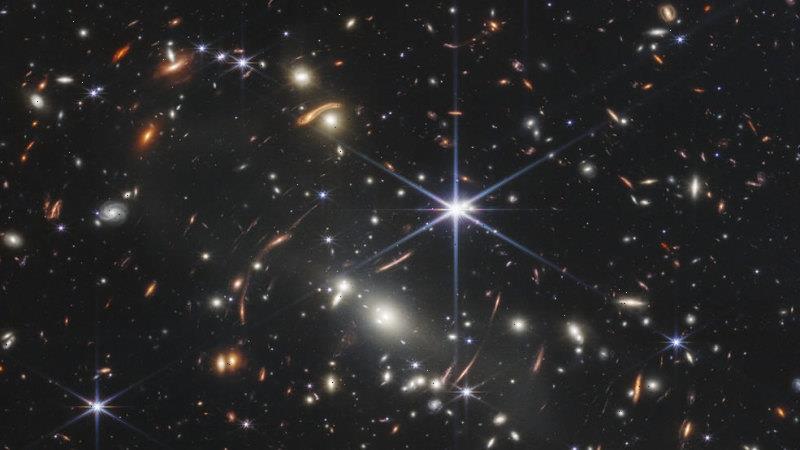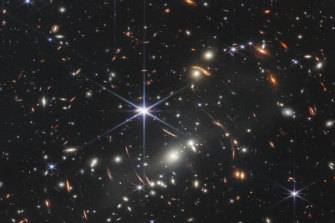
First James Webb telescope image looks further into space – and time – than ever
July 11, 2022Our view of the universe just expanded: the first image from NASA’s new space telescope unveiled on Tuesday morning (AEST) is brimming with galaxies and offers the deepest look of the cosmos ever captured.
The first image from the $10 billion James Webb Space Telescope shows the farthest humanity has ever seen in both time and distance, closer to the dawn of the universe and the edge of the cosmos.
An image captured by the James Webb Space Telescope shows galaxy cluster SMACS 0723.Credit:NASA
The “deep field” image released at a White House event is filled with lots of stars, with massive galaxies in the foreground and faint and extremely distant galaxies peeking through here and there. Part of the image is light from not too long after the Big Bang, which was 13.8 billion years ago.
It will be followed early on Wednesday morning by the release of four more galactic beauty shots from the telescope’s initial outward gazes.
Those include a view of a giant gaseous planet outside our solar system, two images of a nebula where stars are born and die in spectacular beauty, and an update of a classic image of five tightly clustered galaxies that dance around each other.
The world’s biggest and most powerful space telescope rocketed away last December from French Guiana in South America. It reached its lookout point 1.6 million kilometres from Earth in January.
Then the lengthy process began to align the mirrors, get the infrared detectors cold enough to operate and calibrate the science instruments, all protected by a sunshade the size of a tennis court that keeps the telescope cool.
The plan is to use the telescope to peer back so far that scientists will get a glimpse of the dawn of the universe about 13.7 billion years ago and zoom in on closer cosmic objects, even our own solar system, with sharper focus.
Webb is considered the successor to the highly successful but ageing Hubble Space Telescope. Hubble has stared as far back as 13.4 billion years. It found the light wave signature of an extremely bright galaxy in 2016.
NASA science mission chief Thomas Zurbuchen said that with the new telescope the cosmos is “giving up secrets that had been there for many, many decades, centuries, millennia”.
“It’s not an image. It’s a new worldview that you’re going to see,” he said during a recent media briefing.
Zurbuchen said when he saw the images he got emotional and so did his colleagues. “It’s really hard to not look at the universe in new light and not just have a moment that is deeply personal.”
More to come.
AP
Most Viewed in World
From our partners
Source: Read Full Article



